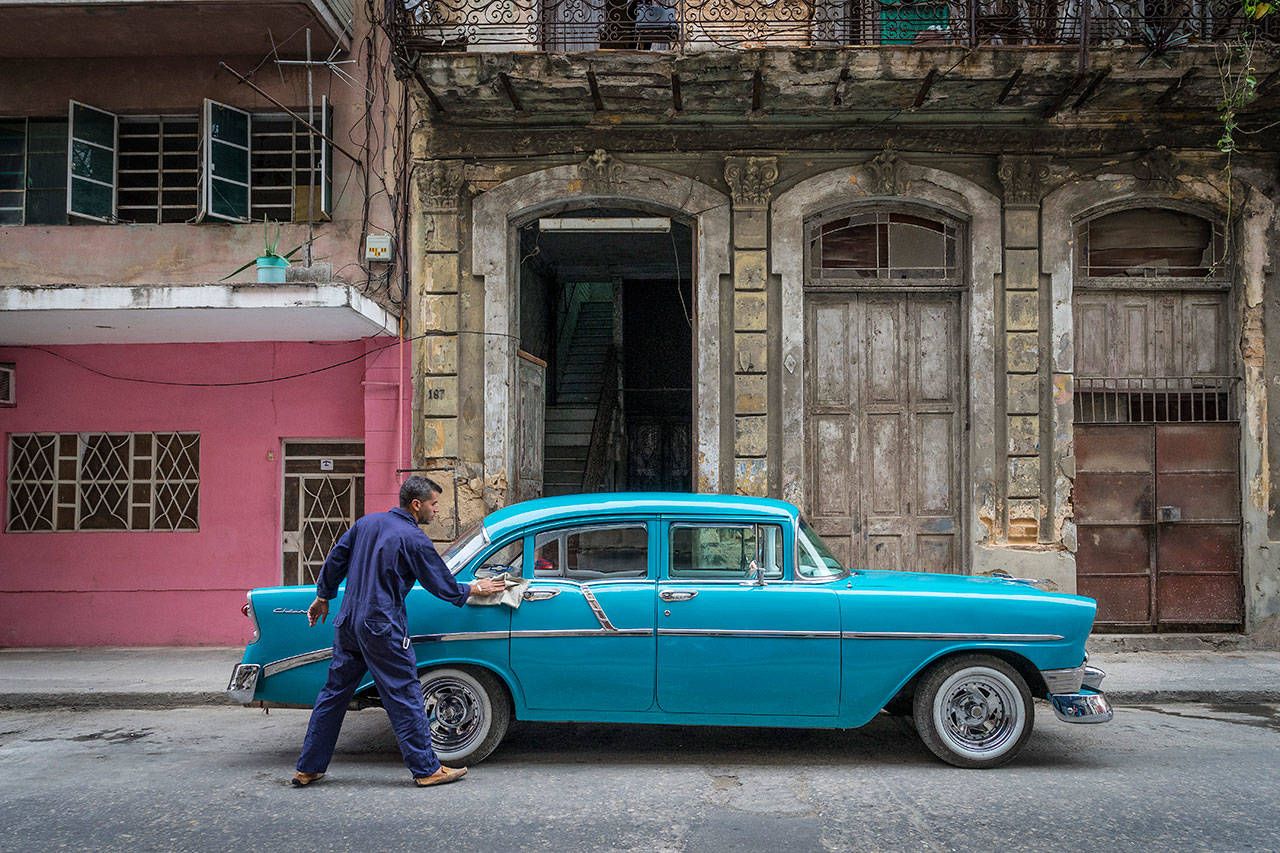Walking through the streets of Havana, Marcia Wesley and three other South Whidbey photographers’ jaws dropped at the sight of a mansion called Josie’s House. Grand yet crumbling, the estate housed an 80-year-old woman who lived alone after her entire family left for a better life abroad.
It was a glimpse into the complicated history of Cuba, which is littered with beautiful colonial villas in decay after years of isolation from foreign money. It’s an unvarnished look of Cuba that’s now harder to experience, following the Trump administration’s decision to narrow the visiting door opened by its predecessor. Luckily, the photographers returned with photos to share with Whidbey Island.
“It’s poignant now that we’ve had this window of time where Americans have had the chance to see Cuba and be part of life there, if only for a week,” Freeland-based photographer Marcia Wesley said. “Hopefully these photos give people a sense of what Cuban life and people are like.”
Unitarian Universalist Congregation of Whidbey Island, located in Freeland, is hosting a photography exhibition featuring the work of four island photographers from their recent trip to the Caribbean island. The photographers — Wesley, Marsha Morgan, Marie Plakos and Julie Boyd — traveled the country with their cameras in March, prior to the new limitations set by the Trump administration. The new rules limit travel to the country to tour groups, similar to how it was prior to Barack Obama’s effort to better relations.
The exhibition was slated to be shown prior to the new rules, but in light of the restrictions, the show gives a rare glimpse of Cuba for those who missed their chance to tour the country solo.
The exhibit’s opening reception is from 11 a.m. to 12:30 p.m. July 9, following Sunday’s service. Featured artists will be present to discuss their experiences, their photography and answer questions. The exhibit runs through the end of August, and will then be shown at Front Room Gallery in Bayview in September, according to Wesley.
According to members of the Unitarian Universalist Visual Arts Committee, the photos depict a unique country that appears stuck in time.
“Their fascinating collection of photos captures a complex nation grasping toward modernity while nearly frozen in a mid-20th century time capsule,” Sandy Welch, Unitarian Universalist Visual Arts Committee member, said. “The history and future of Cuba moving forward may be controversial, but there’s no denying Cuba is amazingly photogenic.”
Viewers will see pictures of the Cuban capitol, Havana, and the surrounding countryside. The photographers’ varied styles and interests show through in the collection; Plakos focuses on capturing images of women and street life, Boyd was drawn to the retro cars and their surroundings, Morgan focused on landscapes and the numerous groups of ballerinas the group ran into and Wesley aimed for intimate, close-up images. The pictures are covered in vibrant hues and textures from the colorful streets and cars, and have a backdrop of old, crumbling buildings from the colonial era.
For Wesley, the decaying buildings from a bygone era represent a sad but beautiful past.
“I think all of us photographers have talked about the sense of beauty, grace and elegance that you see through the decaying buildings,” Wesley said. “It’s similar to the people. You can feel they are really resilient and connected to each other, despite everything they’ve been through.
Wesley says the photos also show which cultures have influenced Havana in the past by the sites: colonial Spanish architecture, Russian goods and African influence. The stagnant nature of the buildings is largely due to a lack of foreign access and funds since the revolution, although Wesley says Cubans told her the building during the window of increased relations with the United States was “unbelievable.”
That period of building looks to be coming to a halt, since part of the new rules set by the Trump administration forbids American companies and citizens from doing business with companies controlled by the Cuban government. This blocks much of the tourist sector from Americans. According to Carol Bingham, Unitarian Universalist Visual Arts Committee member, the new rules bring greater importance to the photo series.
“I think the exhibit is a great gift to us, since many of us might not be able to get there,” Bingham said. “We had no idea this was going to happen when they went, so it’s interesting they’re bringing these photos to South Whidbey.”



